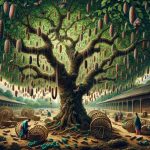Did you ever wonder which countries make silk velvet fabric?
In this article, we will explore the history, production process, and the traditional and emerging producers of this luxurious fabric.
You’ll gain an overview of the global silk velvet industry and discover the importance of silk velvet in the world of fashion and textiles.
So, get ready to dive into the fascinating world of silk velvet and uncover the countries behind its creation.
Table of Contents
History of Silk Velvet Fabric
You might be interested to know that silk velvet fabric has a rich history that dates back to ancient China and Egypt. Silk velvet has been a highly sought-after textile for centuries, known for its luxurious feel and lustrous appearance. The manufacturing techniques for silk velvet are intricate and require skilled craftsmen. The process involves weaving silk threads together to create a base fabric, which is then cut into strips and looped around wires. These wires are then twisted and pulled, creating the characteristic pile that gives silk velvet its soft and plush texture.
Silk velvet holds great significance in historical textiles. In ancient China, silk velvet was considered a symbol of wealth and status, and was reserved for the nobility. It was also highly prized for its ability to absorb and reflect light, making it a popular choice for royal garments and ceremonial robes. In Egypt, silk velvet was used to create elaborate textiles for burial shrouds and other ceremonial purposes. The intricate patterns and rich colors of silk velvet were often associated with royalty and power.
Today, silk velvet continues to be valued for its beauty and elegance. It is used in high-end fashion and interior design, adding a touch of luxury to garments, accessories, and home decor. The history of silk velvet is a testament to the enduring appeal and timeless beauty of this exquisite fabric.
Silk Velvet Production Process
The production process of silk velvet involves weaving silk threads into a luxurious fabric. Silk velvet is known for its softness and lustrous appearance, making it a popular choice for high-end clothing and home furnishings. To achieve the desired colors and patterns, silk velvet is dyed using various techniques. These techniques often involve immersing the fabric in a dye bath or applying the dye directly onto the fabric’s surface. The dyeing process requires precision and expertise to ensure that the colors are evenly distributed and vibrant.
In addition to dyeing techniques, silk velvet production also involves adhering to strict quality standards. These standards ensure that the final product meets the expectations of consumers. Quality control measures may include inspecting the fabric for any flaws or imperfections, checking the color fastness of the dye, and testing the fabric’s durability and strength. Silk velvet is often subjected to rigorous testing to ensure that it meets industry standards for color, texture, and overall quality.
Overall, the production process of silk velvet requires skill, attention to detail, and adherence to quality standards. By carefully weaving silk threads and employing various dyeing techniques, manufacturers are able to create a fabric that is both luxurious and visually stunning.
Traditional Silk Velvet Producing Countries
When it comes to silk velvet production, it’s important to understand the top producers and the historical origins of this luxurious fabric.
From Italy to India, there are several countries renowned for their silk velvet production, each with its own unique techniques and traditions.
Exploring the historical origins of silk velvet can offer insights into the rich cultural and artistic heritage associated with this fabric, making your understanding of its production even more fascinating.
Top Silk Velvet Producers
China and India are the top countries that make silk velvet fabric. When it comes to silk velvet manufacturing techniques, these countries have perfected the art over the years. Here are some interesting facts about the impact of the silk velvet industry on local economies:
-
Job creation: The silk velvet industry provides employment opportunities for thousands of people in China and India. From silk farmers to weavers and dyers, the industry supports a wide range of skilled workers.
-
Economic growth: The production and export of silk velvet contribute significantly to the GDP of these countries. It boosts their economies and helps them establish themselves as key players in the global textile market.
-
Cultural preservation: Silk velvet has a rich cultural heritage in both China and India. By supporting the industry, these countries are able to preserve traditional craftsmanship and techniques that have been passed down through generations.
-
Tourism attraction: The silk velvet industry attracts tourists from all over the world who are interested in witnessing the intricate process of making this luxurious fabric. This boosts local tourism and brings in additional revenue for the regions.
Overall, the silk velvet industry plays a vital role in the economies of China and India, providing employment, boosting GDP, preserving cultural heritage, and attracting tourists.
Historical Silk Velvet Origins
Silk velvet has a fascinating history that dates back centuries. Its historical significance can be traced to the ancient cities of China and Egypt, where the art of silk production flourished.
Silk velvet was highly valued for its luxurious texture and vibrant colors, making it a symbol of wealth and status. In China, silk velvet was often used to create exquisite garments for the imperial court, while in Egypt, it adorned the tombs of pharaohs as a sign of their power and prestige.
Over the years, silk velvet spread to other parts of the world, including Europe and the Americas, where it continued to be cherished for its cultural significance.
Today, silk velvet remains a timeless fabric that adds elegance and sophistication to fashion and interior design.
Emerging Silk Velvet Producers
India and Vietnam are emerging as major producers of silk velvet fabric. These countries have established sustainable silk practices, which are crucial in the fashion and textile industry. Silk velvet, known for its luxurious texture and lustrous appearance, has gained significant importance in fashion and textiles.
Here are some key points to consider:
-
Sustainable Silk Practices:
India and Vietnam have implemented sustainable silk practices, which involve eco-friendly and ethical methods of silk production. These practices focus on minimizing the environmental impact by reducing water usage, pesticide application, and carbon emissions during the silk manufacturing process. -
Importance of Silk Velvet in Fashion and Textiles:
Silk velvet fabric is highly sought after in the fashion industry due to its rich texture and elegant drape. It is commonly used in the production of evening gowns, formal wear, and high-end upholstery. The softness and sheen of silk velvet make it a popular choice for creating luxurious garments that exude sophistication.
Global Silk Velvet Industry Overview
In this discussion, you will explore the key points of Silk Velvet Production Hubs, Market Trends and Demand, and Sustainable Silk Practices in the global silk velvet industry.
You will learn about the countries that serve as major production hubs for silk velvet fabric and how their manufacturing processes contribute to the market trends and demand.
Additionally, you will explore the importance of sustainable silk practices in ensuring the long-term viability of the industry.
Silk Velvet Production Hubs
You’ll find that countries like China and Italy are major hubs for producing silk velvet fabric. These nations have established themselves as prominent silk velvet manufacturing centers, showcasing their expertise in silk velvet production techniques.
China, with its rich silk heritage, has been producing silk velvet for centuries. The country’s skilled artisans employ traditional methods, such as hand-weaving and hand-dyeing, to create exquisite silk velvet fabrics.
Italy, known for its luxury fashion industry, also plays a significant role in silk velvet production. Italian manufacturers combine traditional craftsmanship with modern technology to produce high-quality silk velvet that is sought after worldwide.
Both China and Italy’s dedication to excellence and their long-standing history in silk production make them leading players in the global silk velvet industry.
Market Trends and Demand
China and Italy have become major hubs in the production of silk velvet due to their expertise and ability to meet the global demand for this luxurious material. The silk velvet market has witnessed significant growth in recent years, driven by various factors impacting its demand. These include:
- Increasing disposable income of consumers, especially in emerging economies, leading to a rise in demand for luxury fabrics like silk velvet.
- Growing fashion industry and changing consumer preferences towards high-quality and unique textiles.
- Rising popularity of silk velvet in interior design, with more people incorporating it into their homes for a touch of elegance and opulence.
- Technological advancements in silk velvet production, making it more accessible and affordable for manufacturers and consumers alike.
- Growing awareness about the sustainability and eco-friendliness of silk velvet, leading to increased demand from environmentally conscious consumers.
These factors, along with the timeless appeal and versatility of silk velvet, are driving its market growth and making it a sought-after fabric worldwide.
Sustainable Silk Practices
Italy has implemented sustainable practices in the production of silk, contributing to the growing demand for eco-friendly textiles. By prioritizing sustainable silk farming and eco-friendly silk production methods, Italy has become a leader in the industry. The table below highlights some of the sustainable practices employed by Italian silk producers.
| Sustainable Silk Practices |
|---|
| Mulberry tree cultivation |
| Organic silkworm rearing |
| Natural dyeing techniques |
| Water conservation measures |
| Waste reduction and recycling |
Italy’s commitment to sustainability ensures that the silk production process has minimal impact on the environment, making it an attractive choice for conscious consumers. By choosing silk products from Italy, you can support the growth of eco-friendly textiles and contribute to a more sustainable fashion industry.
Importance of Silk Velvet in Fashion and Textiles
Silk velvet fabric is highly valued in the fashion and textiles industry for its luxurious feel and elegant appearance. In haute couture, silk velvet is often used to create exquisite and high-end garments. Designers appreciate its softness and drape, which allows for the creation of stunning, flowing silhouettes. The rich texture of silk velvet also adds depth and dimension to clothing, making it a favorite choice for evening gowns and red carpet attire.
But silk velvet’s allure extends beyond the runway. It is also widely used in home furnishings, adding a touch of opulence to interiors. From upholstery to curtains and cushions, silk velvet brings a sense of indulgence and sophistication to any space. Its plushness and sheen elevate the aesthetic of furniture pieces and create a cozy and inviting atmosphere.
Silk velvet has a long history of being associated with luxury and refinement. Its production involves intricate techniques, such as weaving silk fibers into a pile, which gives it its characteristic softness and lustrous appearance. The process requires skilled craftsmanship and attention to detail, resulting in a fabric that exudes elegance and charm.
Whether in the world of fashion or home decor, silk velvet continues to be a sought-after material for those who appreciate the finer things in life. Its timeless appeal and unmatched beauty make it a true treasure in the realm of textiles.
Conclusion
In conclusion, silk velvet fabric has a rich history and is produced by various countries around the world. Traditional silk velvet producers include China, India, and Italy, known for their expertise in the craft.
However, emerging countries like Thailand and Vietnam are also making their mark in the industry. The global silk velvet industry plays a crucial role in fashion and textiles, providing luxurious and versatile fabric options.
Its importance is undeniable, making it a sought-after material for designers and consumers alike.
- Why Open-Weave Scrim Is the Secret to Stunning Event and Canopy Designs - June 26, 2025
- Creating Large-Scale Art Installations With Scrim Fabric - June 26, 2025
- Scrim Fabric in Upholstery: Understanding Its Use as a Backing Material - June 26, 2025





